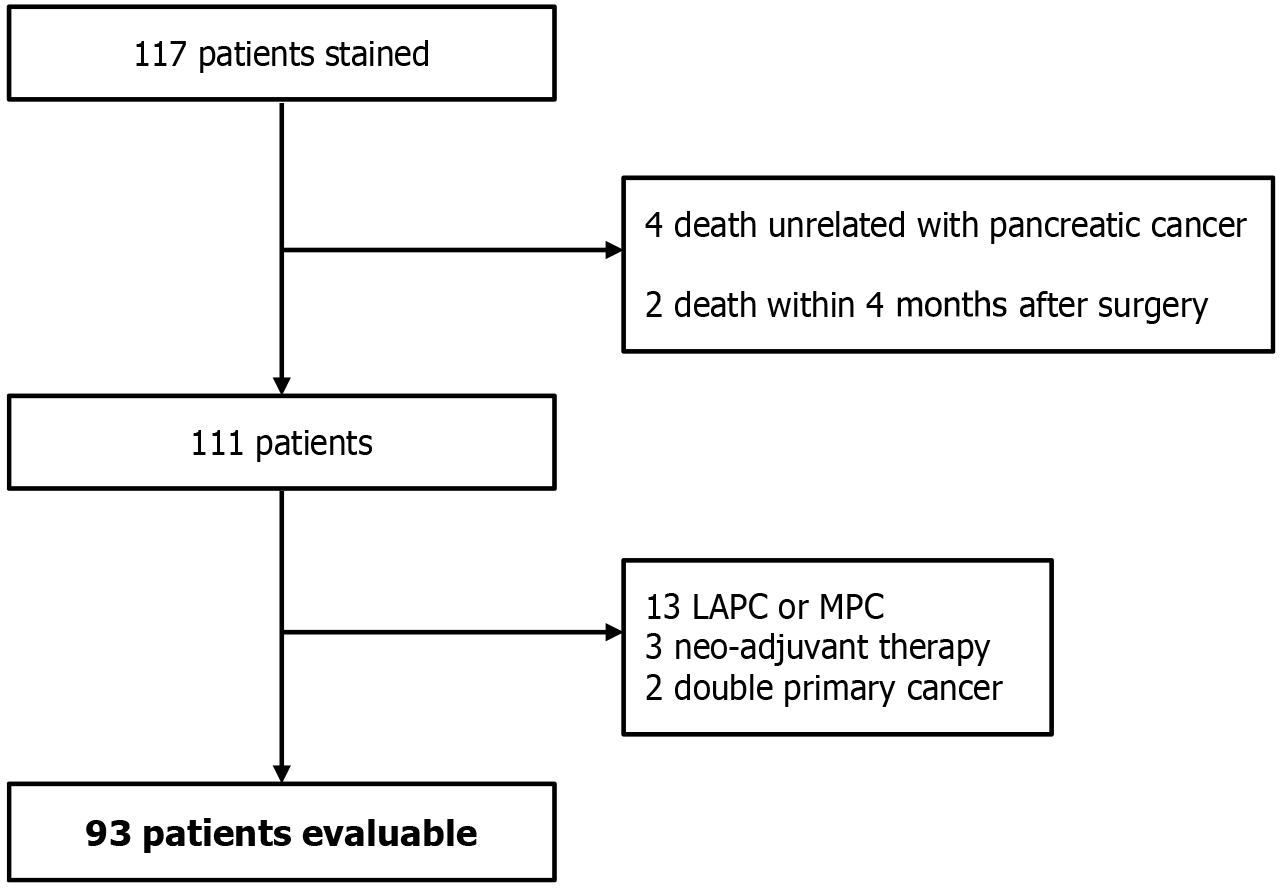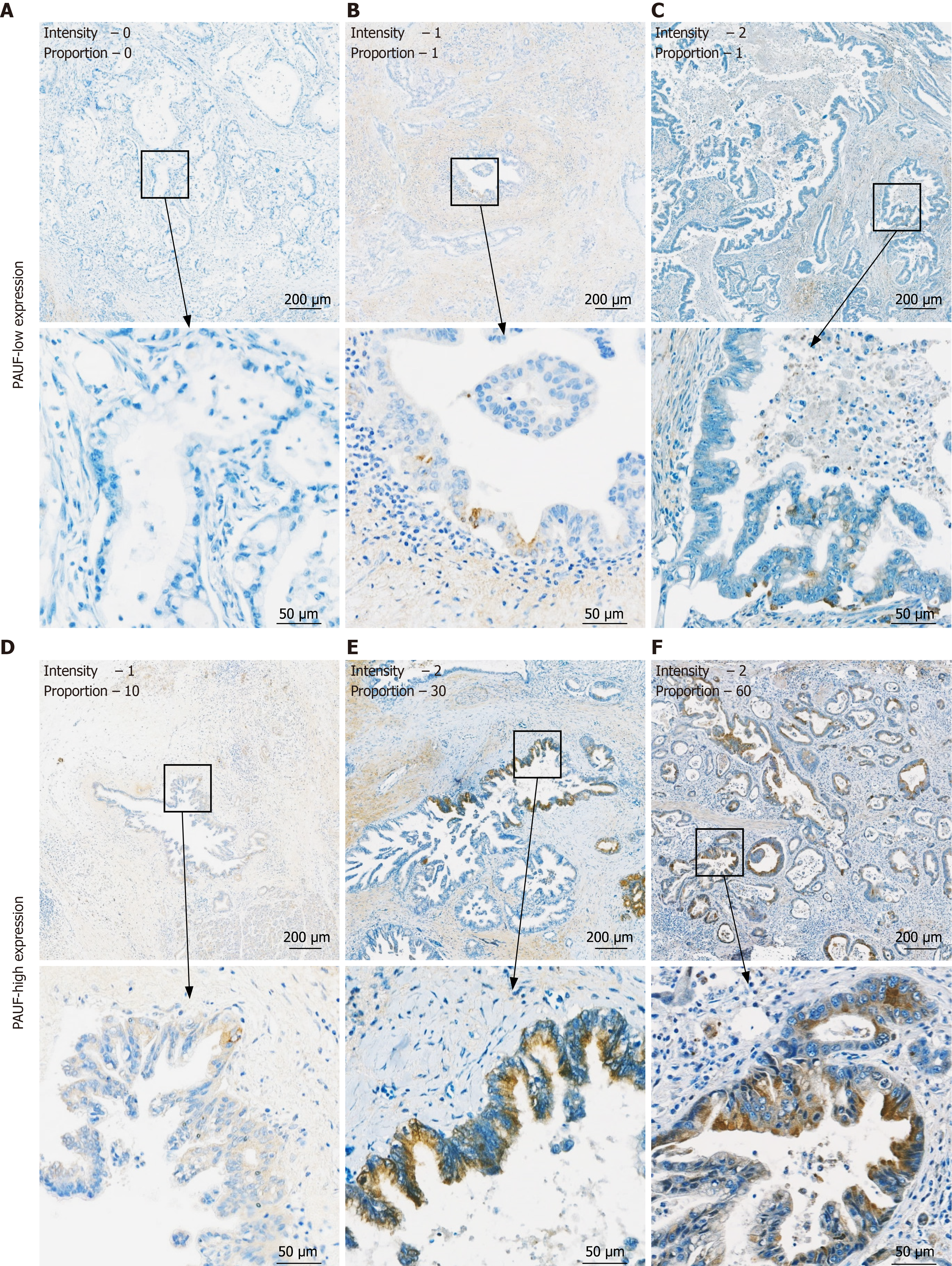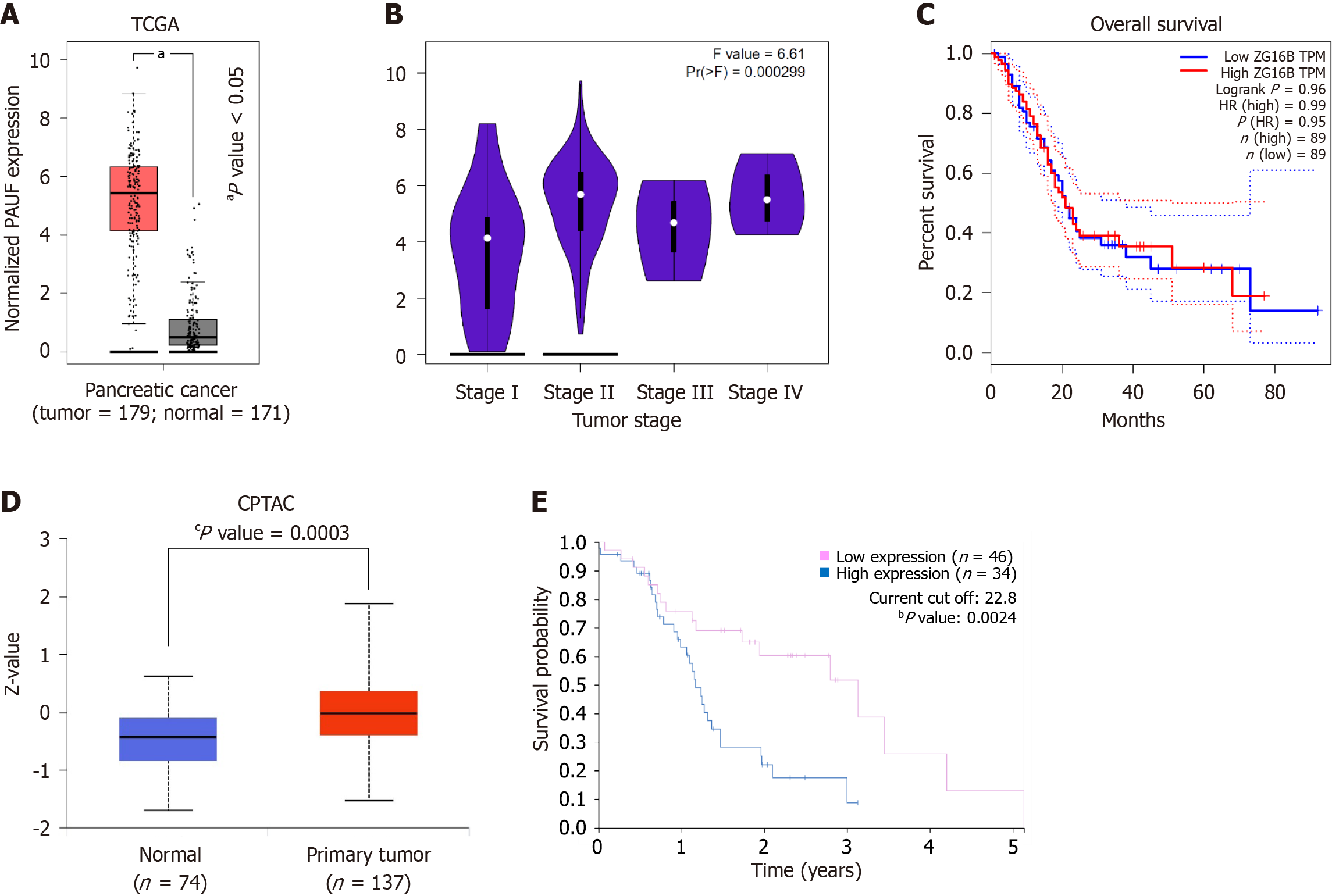Copyright
©The Author(s) 2025.
World J Gastrointest Oncol. Sep 15, 2025; 17(9): 109055
Published online Sep 15, 2025. doi: 10.4251/wjgo.v17.i9.109055
Published online Sep 15, 2025. doi: 10.4251/wjgo.v17.i9.109055
Figure 1 CONSORT diagram of the included pancreatic cancer patients.
A total of 117 pancreatic cancer tissue samples were obtained from individuals who underwent surgical treatment after diagnosis. Among them, 93 cases were ultimately enrolled in the analysis after excluding those presenting with high stage disease, those treated with neoadjuvant chemotherapy, and subjects diagnosed with duplicate cancers. LAPC: Locally advanced pancreatic cancer; MPC: Metastatic pancreatic cancer.
Figure 2 Immunohistochemistry staining results of pancreatic adenocarcinoma upregulated factor in pancreatic cancer patient tissues.
A-F: Representative immunohistochemistry images from six pancreatic cancer tissue samples demonstrating varying levels of pancreatic adenocarcinoma upregulated factor (PAUF) expression, assessed by both staining intensity and the proportion of PAUF-positive tumor cells. Samples classified as PAUF-low exhibit staining intensity of 0 or 1+ with ≤ 4% of tumor cells stained, while PAUF-high cases show staining intensity of 1+ or 2+ with > 5% of tumor cells stained. PAUF: Pancreatic adenocarcinoma upregulated factor.
Figure 3 Association of mRNA and protein expression levels of pancreatic adenocarcinoma upregulated factor with patient survival in pancreatic cancer.
A: Pancreatic adenocarcinoma upregulated factor (PAUF) mRNA expression in normal tissues (n = 171) and tumor tissues (n = 179) was assessed using data from the Genotype-Tissue Expression and The Cancer Genome Atlas databases via the Gene Expression Profiling Interactive Analysis platform; B: Analysis of PAUF expression across distinct pathological stages of pancreatic cancer using the Gene Expression Profiling Interactive Analysis platform, based on stage-specific plots derived from transcriptomic data; C: Overall survival analysis of pancreatic cancer patients based on PAUF mRNA expression using The Cancer Genome Atlas database. Each dot represents the transcript per million (TPM) value of PAUF in an individual sample. Kaplan-Meier survival curves were generated, and survival differences were evaluated using the log-rank test. A solid line indicates median overall survival. The high-expression group (above median TPM) and the low-expression group (below median TPM) are indicated by dotted lines; D: PAUF protein levels in normal tissues (n = 74) and primary tumor samples (n = 137) were compared using data from the Clinical Proteomic Tumor Analysis Consortium; E: Survival probability among pancreatic cancer patients according to differences in PAUF protein expression was analyzed using the Clinical Proteomic Tumor Analysis Consortium dataset. PAUF: Pancreatic adenocarcinoma upregulated factor; TCGA: The Cancer Genome Atlas; TPM: Transcript per million; ZG16B: Zymogen granule protein 16B; HR: Hazard ratio; CPTAC: Clinical Proteomic Tumor Analysis Consortium dataset. aP < 0.05 vs normal tissues, bP < 0.01 vs low-expression group, and cP < 0.001 vs normal tissues.
Figure 4 High expression of pancreatic adenocarcinoma upregulated factor protein in pancreatic cancer patients is associated with reduced overall survival.
A: Pancreatic adenocarcinoma upregulated factor (PAUF) protein expression was categorized into PAUF-low and PAUF-high based on immunohistochemistry staining intensity and the proportion of stained tumor cells; B: Overall survival of patients with PAUF-low and PAUF-high was analyzed using Kaplan-Meier curves in patients with pancreatic cancer. PAUF: Pancreatic adenocarcinoma upregulated factor. aP < 0.05 vs pancreatic adenocarcinoma upregulated factor-low.
- Citation: Kim JH, Na HY, Jung K, Jang D, Youn Y, Kim DH, Han HD, Hwang JH. Quantitative immunohistochemistry analysis of pancreatic adenocarcinoma upregulated factor expression in pancreatic cancer and its prognostic significance. World J Gastrointest Oncol 2025; 17(9): 109055
- URL: https://www.wjgnet.com/1948-5204/full/v17/i9/109055.htm
- DOI: https://dx.doi.org/10.4251/wjgo.v17.i9.109055
















